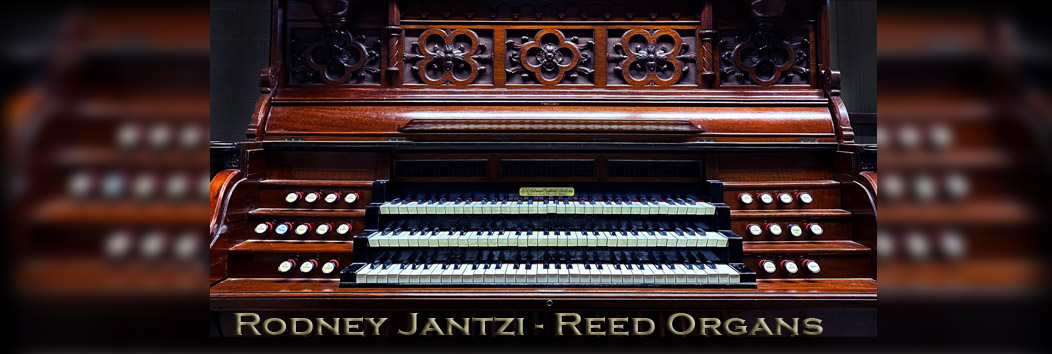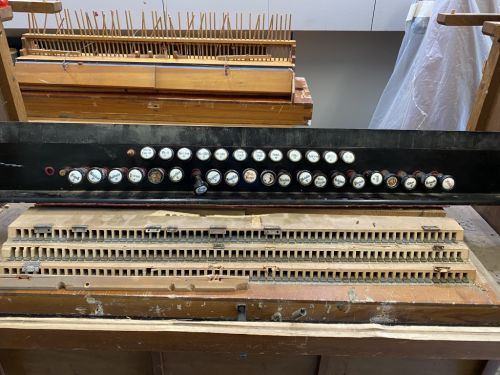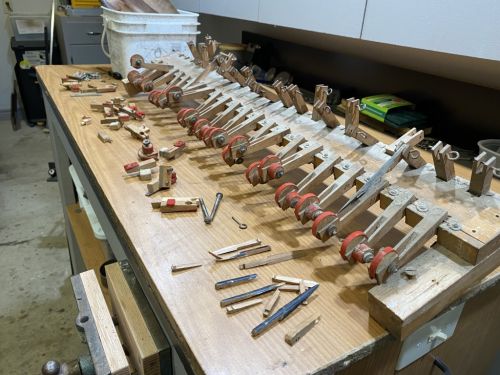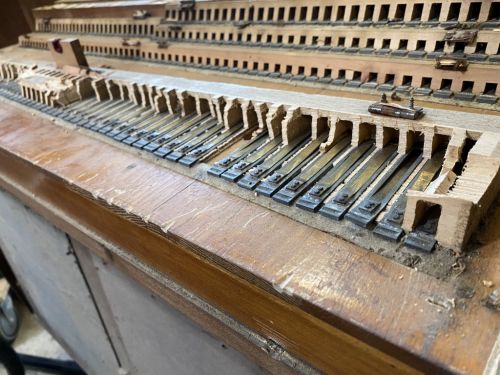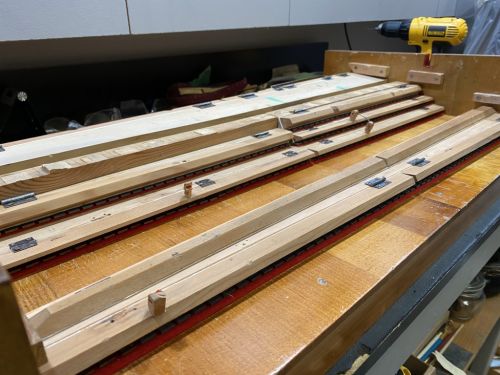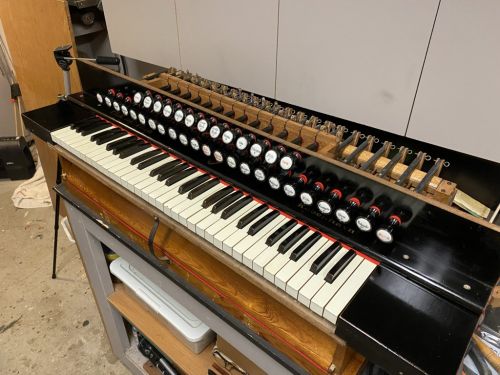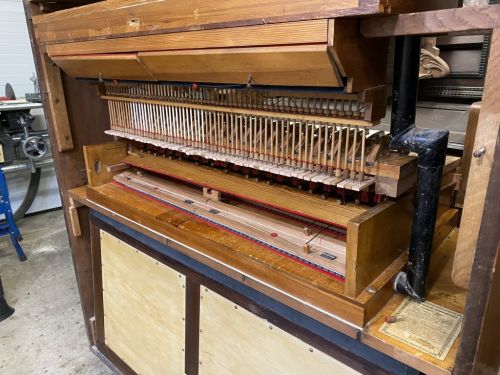The Chr. Winther Reed Organ Rebuild
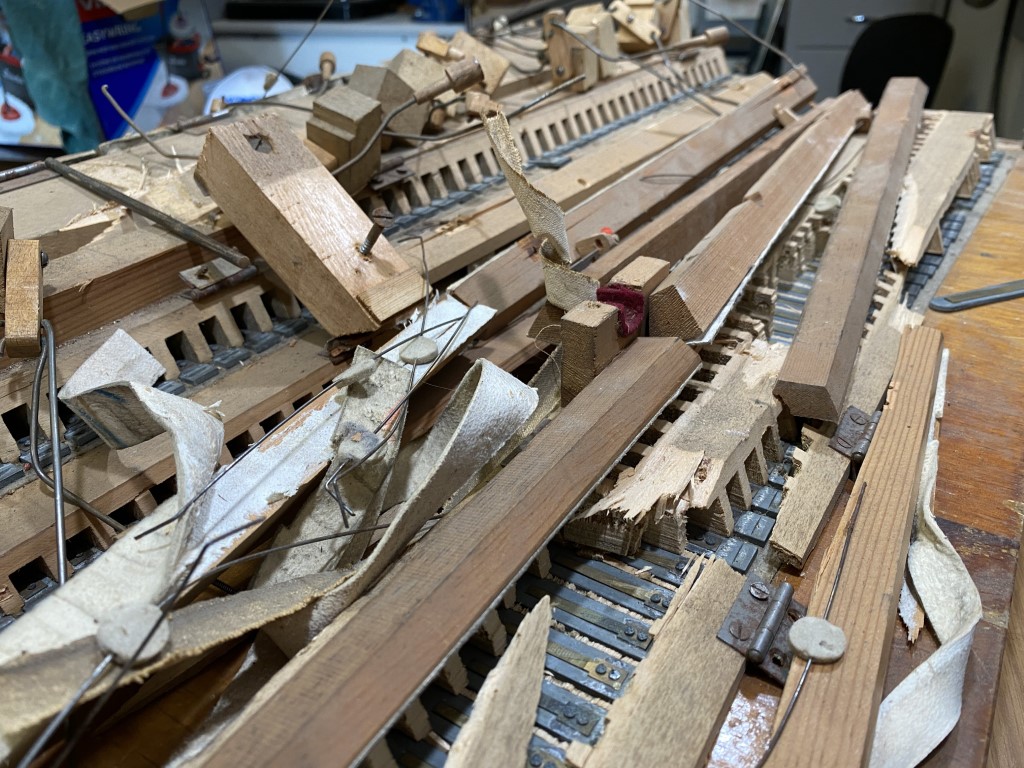
Throughout these past 13 years of rebuilding, restoring and repairing reed organs, my experiences are still limited as to what can come your way to make a broken "pump organ" into a musical instrument again. My experience can be considered as a “new kid on the block” compared to others that have been in it for a lifetime. However, I have been fortunate enough to bring a number of organs back to life that would have been considered too far gone for a reasonable repair, from being picked up from the curb (kerb) at nearby town, to shipping a rotten, moldy instrument from Ireland.
This next rebuild is an instrument that is in a class of its own, the story follows:
A 36 stop Chr. Winther reed organ from Denmark is offered for sale for months, it is in the north of Ontario, and it is quite a distance from where anyone would normally collect a reed organ. The owner, a lovely lady has been trying to rehome it, and there is just no interest. After three months and no solid bites to even give it away, she decides that it is not wanted, and proceeds to break it apart to throw it away – this is a perfectly logical and responsible choice in my opinion, and it is not my intentions to propagate ill feelings for her choice. She did what had to be done at the time, as hard as it must have been…
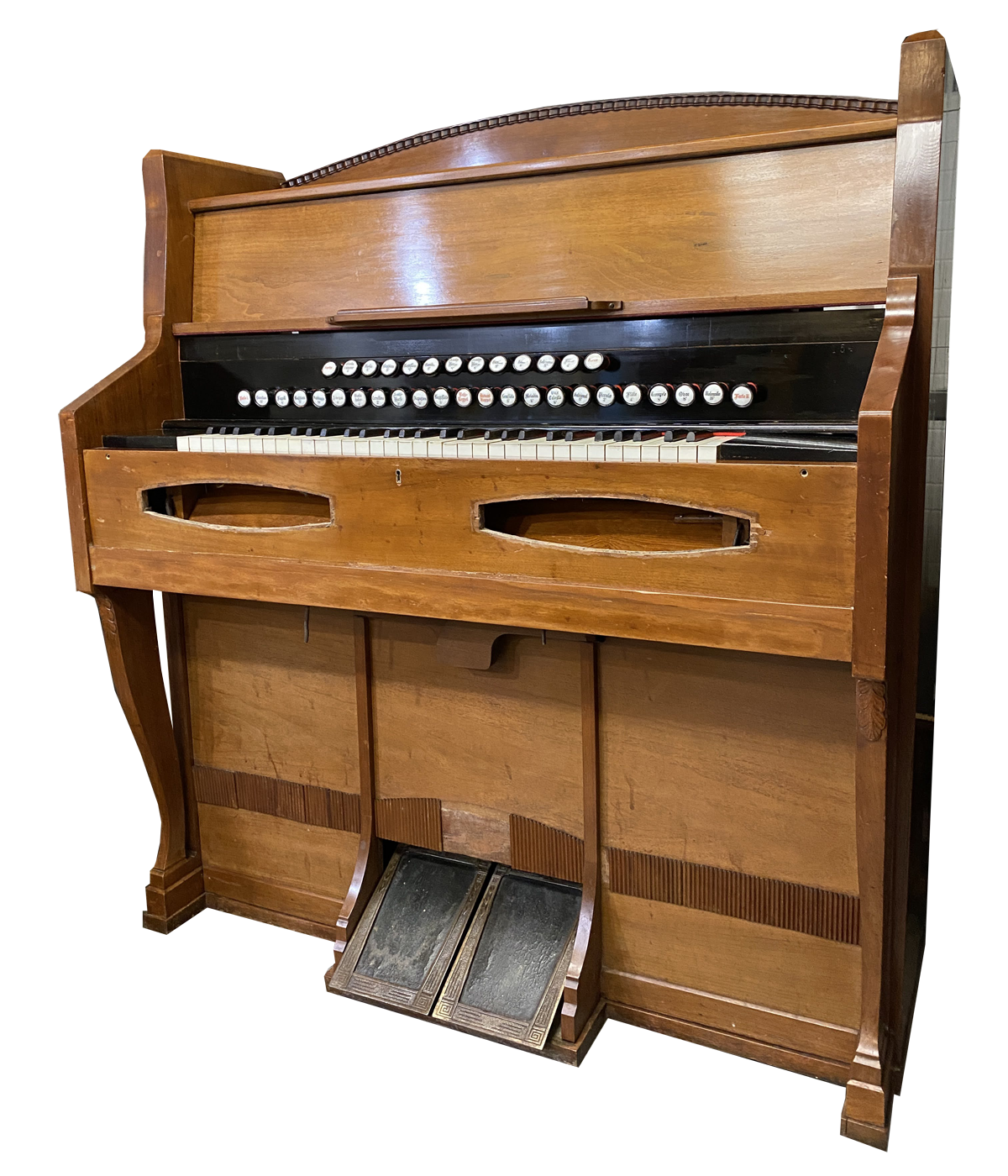
Without further hesitation, the purchase of the broken-up organ was secured, and she was asked to keep all parts and splinters together, which she kindly obliged. The organ was then picked up as September began, and delivered to my garage for emergency triage, which is another instrument that circumvented the Bell organ restoration once again.
The main case was delivered with most of the panels missing, along with a couple of piles of wood shards and broken panels, two boxes of broken bits from the size of a sliver to a random stop rod, a box of keys and other shards and parts, and a garbage bag full of splintered parts. With my hands on my hips, I stood there looking at this mess with a weird and crooked smile, to the point of being amused that I was probably going to try and put it back together. The keys and stop assemblies were all torn out with severe damages everywhere. The rear reed rank was destroyed, along with many damages to anything on the main action.
If it were any other organ, it would have been salvaged for parts. But with this one containing 36 stops and an incredible array of reeds, it needed to be at least attempted to be rebuilt from the shards. Work immediately began on identifying the parts and finding out where they came from. The rest of this story will be told in the picture albums below of the rebuilding of this “Humpty Dumpty” reed organ.
